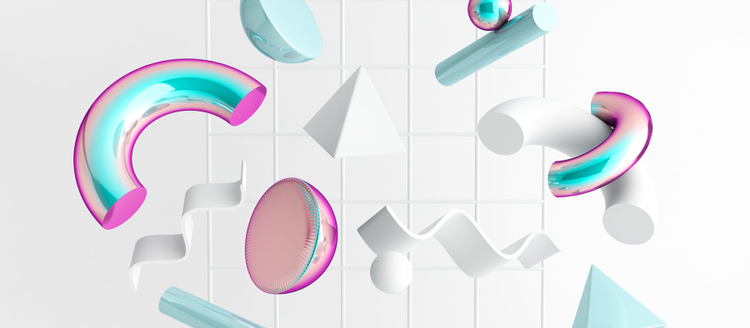The renowned British scholar and writer Thomas Gray famously said a long time ago: “Commerce changes the fate and genius of nations.” Thanks to technological advancements and their pervasiveness in people’s daily lives, businesses have had access to a plethora of new channels for reaching consumers in the past decade. As more and more consumers seek out the convenience of online shopping, an increasing number of vendors are launching new channels and strategies to capitalise on this trend. It is in this domain where the design of an enjoyable user experience propels stakeholders toward financial gain. Experience design for online stores is the topic of today’s discussion.
If you’re looking for ottawa website design company, look no further than an award-winning web design agency. Their certified web design specialists know what they’re doing, and they often produce stunning web designs. However, not all web designs require this level of effort.
Internet Business: What Is It?
We defined e-commerce (Electronic Commerce) in our free ebook “Design for Business” as the practice of conducting business transactions with clients through the Internet and other electronic devices. Full commercial operations, including payments, delivery, and refunds, are made possible by this type of communication and sales finalization, which brings new elements to data management, sales channels, advertising, product presentation, and more.
The growth of online shopping has been phenomenal over the past ten years. These days, it opens up possibilities for user-to-user sales platforms, online auctions, and e-commerce between companies and consumers. E-presentation and -booking services, e-banking, e-commercial transactions involving e-money and e-wallets, various types of e-marketing, and a plethora of other things are all part of modern e-commerce systems and activities.
Marketing and Branding from a Business Point of View
The end result of any business plan is, or at least should be, an e-commerce website or mobile app. It denotes that they are a part of a specific business strategy that has well-defined objectives and methods for reaching those objectives. So, it’s safe to say that the design process for such a product begins long before any actual lines are drawn.
It’s clear that the aforementioned factors have an impact on design solutions and the methods used to bring them to fruition. Ideally, stakeholders and marketing experts should begin brainstorming with designers; if this is not feasible, then designers should be given as much information as possible regarding these factors in subsequent specifications and tasks. If you are part of an outsourced design team, focus on gathering this information so that you can devote more time and energy to the most important parts of the project. If you are unable to do so, keep in touch with the clients until you have clarified everything. In contrast to starting a design from scratch without any background information or objectives, this kind of communication will save a tonne of time during the iterative process.
User experience viewpoint
When discussing online shopping, it’s critical to keep in mind that a one-time sale through a website or mobile app is the bare minimum. The true goal of the business’s stakeholders is to have this user make repeat purchases through their website or app. A direct determinant of increasing profits is user retention. We can’t deny that this is one of the main draws of the online retail space for creative types. People need to visit the e-commerce platform and purchase things offered on it; that’s the clear and simple objective.
A user-friendly interface
Your website’s success will not be determined by how many “wows” it generates, regardless of how great its design is or how stunning its images are. The number of successful purchases is a straightforward indicator of efficiency. Design is meaningless and stakeholders lose money if users don’t buy. The leading violin here is clear, intuitive navigation.
Every single one of your buttons, links, and cards has the potential to make a huge impact on your conversion rate. Remember this: with the current level of e-commerce competition, customers aren’t willing to wait around or waste their time on pointless processes. Online shoppers want a streamlined process that saves them time and effort compared to visiting a physical store. They will seek it out elsewhere if you refuse to give it to them.
A sales strategy
In sales, a “purchase funnel” or “sales funnel” is a series of steps that a potential buyer takes to learn more about a product and its advantages before deciding to buy it. In the book, we covered the following topics regarding the basic stages of a sales funnel:
Opening (Consciousness). The product’s basic details, including its brand and nature, are presented to the user. Put simply, the user becomes aware of the product or service’s availability.
Presenting the items in an effective manner
Another fundamental consideration is the design of the product’s screen or page layout. On the one hand, you should avoid overwhelming visitors with too much information; doing so will take their focus off of your primary objective, which is to have them make a purchase. However, consumers aren’t yet prepared to click around multiple pages to gather more details about the product. As a result, the designer needs to devote sufficient time to researching the topic and determining the optimal balance of data presented on a single screen. For each service or product category, insights into the target audience’s information needs can be gleaned through user testing and audience analysis.
viewpoint on user interface
The e-commerce project’s success is heavily influenced by the UI design stage, which focuses on both functionality and aesthetics. Visual performance is created by this aspect, which also lays the groundwork for the interface’s desirability and the buyer’s positive emotional feedback. Designers working on user interfaces for online stores must first settle on an overarching aesthetic concept that will serve to bolster the aforementioned user experience (UX) factors while simultaneously lending an air of sophistication to the virtual point of sale.

